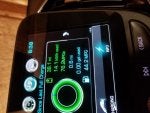Does this happen to anyone else regularly?
![]()
I'm always 1 mile short of my destination and the ICE kicks on... for 45 sec.
I wish the car would check it's gps and know it's only got a mile to go... there really is enough juice left.

I'm always 1 mile short of my destination and the ICE kicks on... for 45 sec.
I wish the car would check it's gps and know it's only got a mile to go... there really is enough juice left.




